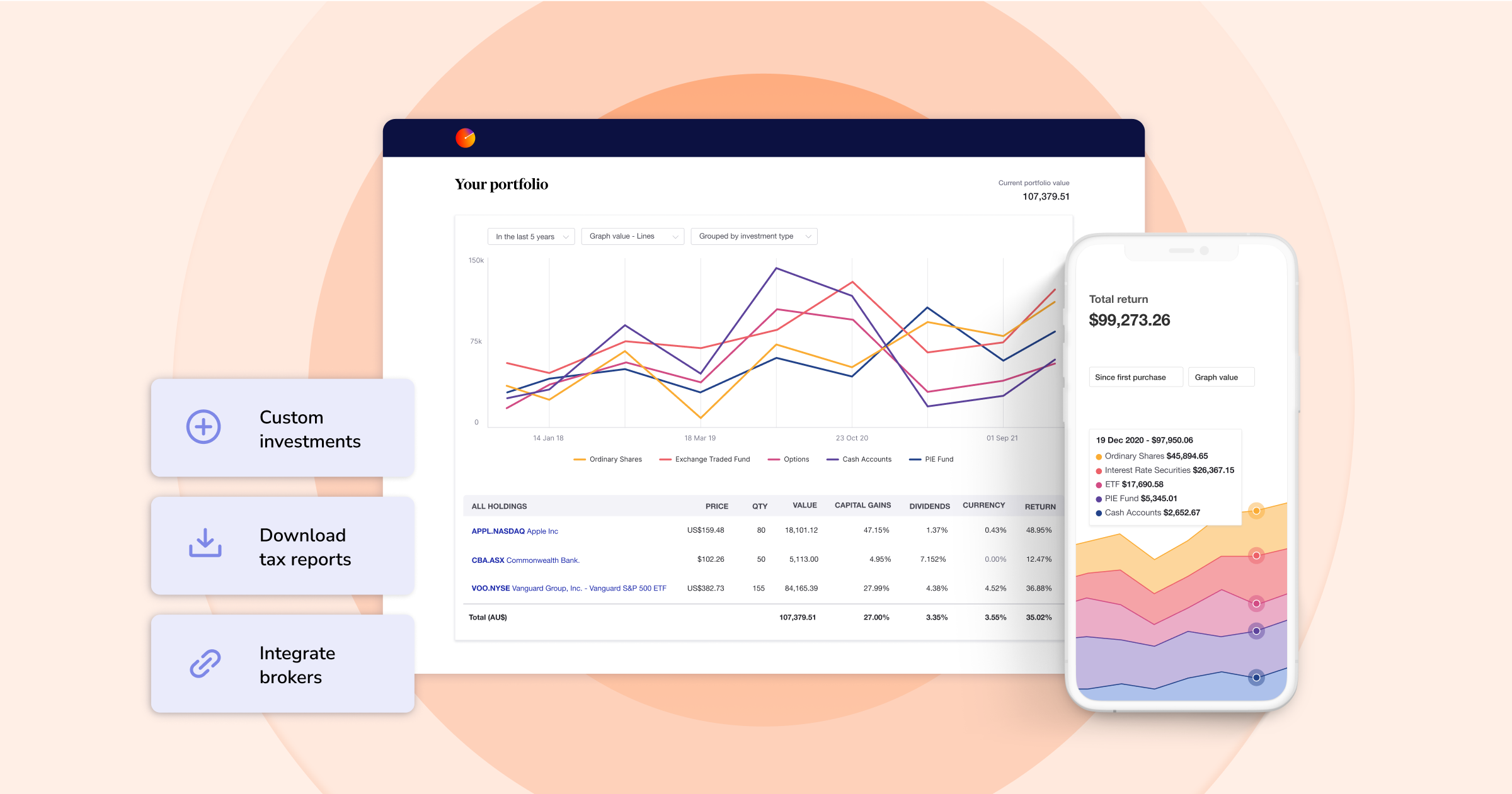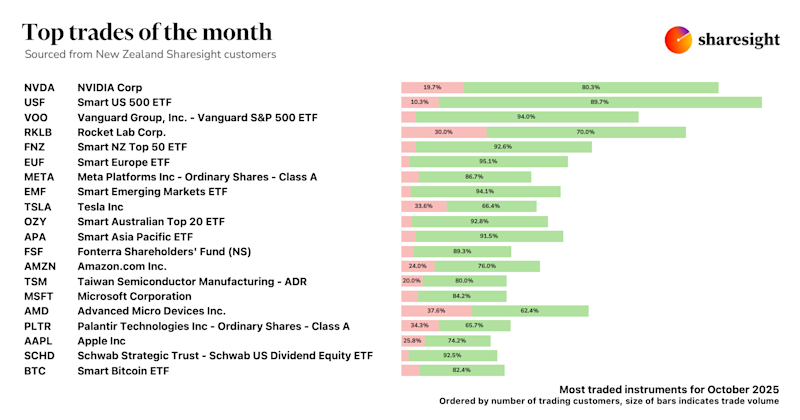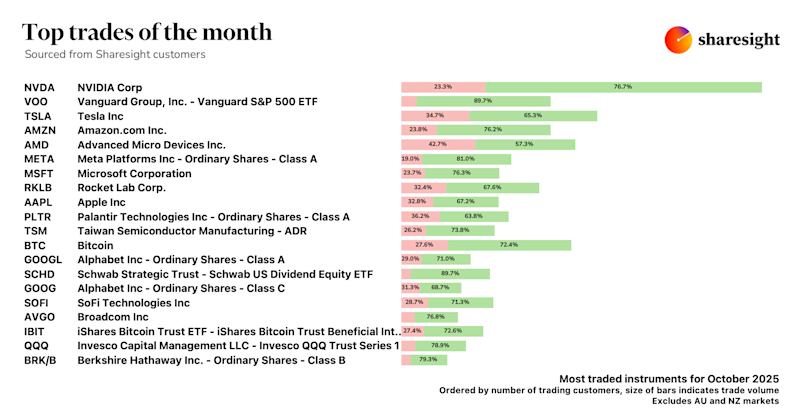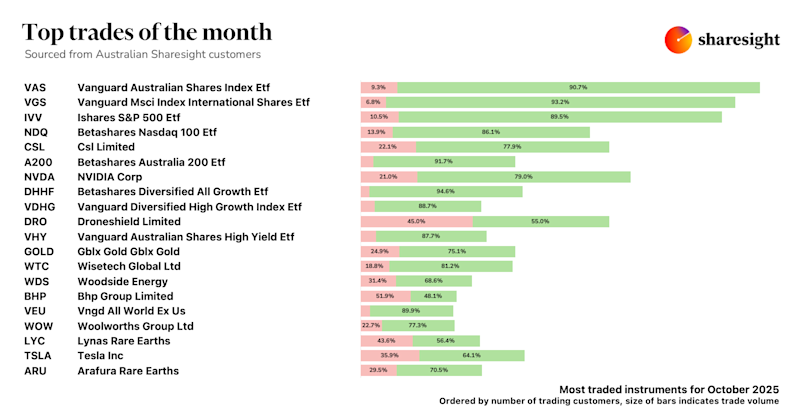ETF overlap: How to uncover and manage hidden concentration risk
Disclaimer: This article is for informational purposes only and does not constitute a specific product recommendation, or taxation or financial advice and should not be relied upon as such. While we use reasonable endeavours to keep the information up-to-date, we make no representation that any information is accurate or up-to-date. If you choose to make use of the content in this article, you do so at your own risk. To the extent permitted by law, we do not assume any responsibility or liability arising from or connected with your use or reliance on the content on our site. Please check with your adviser or accountant to obtain the correct advice for your situation.
ETF overlap is a hidden risk that can quietly sabotage your portfolio’s diversification strategy — regardless of how carefully you choose your investments. While you may be investing in exchange-traded funds (ETFs) to achieve diversification, it’s easy to unintentionally invest in overlapping funds, which can lead to an over-concentration in specific stocks or sectors, undermining the very goal of spreading risk.
This concentration risk arises because the seemingly distinct ETFs are, in fact, doubling or even tripling down on the same underlying assets. You might believe your ETFs are diversified across various market segments, but if the underlying holdings of your chosen ETFs are highly correlated, your portfolio's performance becomes heavily dependent on the fortunes of a limited number of companies.
In this article, we’ll dive deeper into ETF overlap and concentration risk, walk through a real-world example of ETF overlap, and show how Sharesight’s exposure report helps you identify and avoid hidden overlap risk.

Understanding overlap and concentration
Concentration risk is the danger of loss resulting from having a large portion of your investments in a single asset, sector or geographical region. When that particular area performs poorly, a concentrated portfolio will suffer disproportionately large losses. ETF overlap contributes directly to this risk.
To gain a better understanding, imagine a scenario in which you hold both an S&P 500 ETF and a technology-focused ETF. While these may seem like separate investments, the S&P 500 is market-cap weighted, meaning large technology companies already constitute a significant portion of its holdings. By adding a technology ETF to your portfolio, you would be amplifying your exposure to these same tech giants, such as Apple, Microsoft and NVIDIA. A downturn in the tech sector would then have a more severe impact on your portfolio than you might have anticipated.
A practical example of increased concentration
Here’s another hypothetical scenario involving three popular, real-world ETFs:
- iShares Core S&P 500 ETF (IVV): Tracks the S&P 500 index
- Invesco QQQ Trust (QQQ): Tracks the Nasdaq-100 Index, which is heavily weighted towards technology and growth stocks
- Vanguard Growth ETF (VUG): Invests in large-cap U.S. growth stocks.
Holding all three of these ETFs, you might believe you have a diversified portfolio spanning the broader market, technology leaders and growth-oriented businesses. However, a closer look at their top holdings reveals significant overlap and exposure to Big Tech.
 Exposure report run on a “do not group” basis on Sharesight.
Exposure report run on a “do not group” basis on Sharesight.
If you had an equal allocation to these three ETFs, you would find that your actual exposure to Big Tech is far greater than the individual ETF weightings suggest. This hidden concentration means your portfolio is less diversified and more susceptible to risks affecting the large-cap growth and technology sectors.
The solution: X-ray into underlying holdings with Sharesight’s exposure report
Manually checking the holdings of each ETF can be time consuming and complex, especially as your portfolio grows. This is where a dedicated portfolio tracking tool like Sharesight becomes invaluable. Sharesight is designed to give you true visibility into your investments, and our exposure report is the perfect solution for diagnosing ETF overlap and concentration risk.
Instead of just showing you a list of the ETFs you own, the exposure report goes deeper, providing a detailed breakdown of your direct holdings and any underlying holdings within ETFs, revealing the stocks, sectors and countries you are exposed to across your entire portfolio.
The report gives you the ability to analyse your portfolio’s exposure across multiple factors, including:
- Market: See your allocation to different stock exchanges
- Sector: Discover if you are unintentionally overweight in certain sectors
- Country: Understand your geographic diversification
- Individual holdings: Get a list of every single underlying company you own and its total weighting in your portfolio.
By running the exposure report, the abstract problem of ETF overlap becomes a clear, data-driven insight. It gives you certainty, along with all the data you need to make informed decisions.
Managing risk with clarity
Once Sharesight has helped you identify unintended concentrations, you can take action. You might decide to sell one of the overlapping ETFs and replace it with a fund that offers genuine diversification, such as a small-cap, international or bond ETF.
A certain degree of overlap may be intentional. For example, if you have strong conviction in the long-term prospects of a particular sector, you may choose to overweight it as part of your strategy. The key difference is that by using a tool like Sharesight, this concentration becomes a conscious and deliberate part of your investment strategy rather than an accident of ignorance.
In conclusion, while ETFs are powerful tools, you must be vigilant about the potential for overlap. By leveraging the powerful analytics of Sharesight's exposure report, you can look through, understand your portfolio’s true composition, and ensure you are taking on the right amount of risk for your financial goals.
Join hundreds of thousands of investors around the world using Sharesight to automatically track their investment performance and tax, and make smarter investing decisions. With Sharesight you can:
- Track all of your investments in one place, including stocks, ETFs, mutual/managed funds, property and even cryptocurrency
- Automatically track your dividend and distribution income from stocks, ETFs and mutual/managed funds
- Run powerful reports built for investors, including performance, diversity, contribution analysis, future income, exposure, risk, multi-period and multi-currency valuation
- See the true picture of your investment performance, including the impact of brokerage fees, dividends, and capital gains with Sharesight’s annualised performance calculation methodology

FURTHER READING

Top trades by New Zealand Sharesight users — October 2025
Welcome to the October 2025 edition of Sharesight’s trading snapshot, where we look at the top 20 trades made by New Zealand Sharesight users.

Top trades by global Sharesight users — October 2025
Welcome to the October 2025 edition of Sharesight’s trading snapshot, featuring the top 20 trades made by Sharesight users worldwide.

Top trades by Australian Sharesight users — October 2025
Welcome to the October 2025 edition of Sharesight’s trading snapshot, where we look at the top 20 trades by Australian Sharesight users.